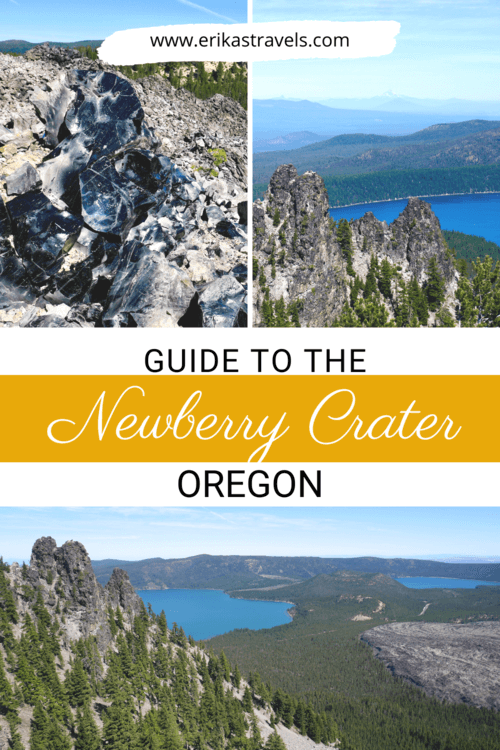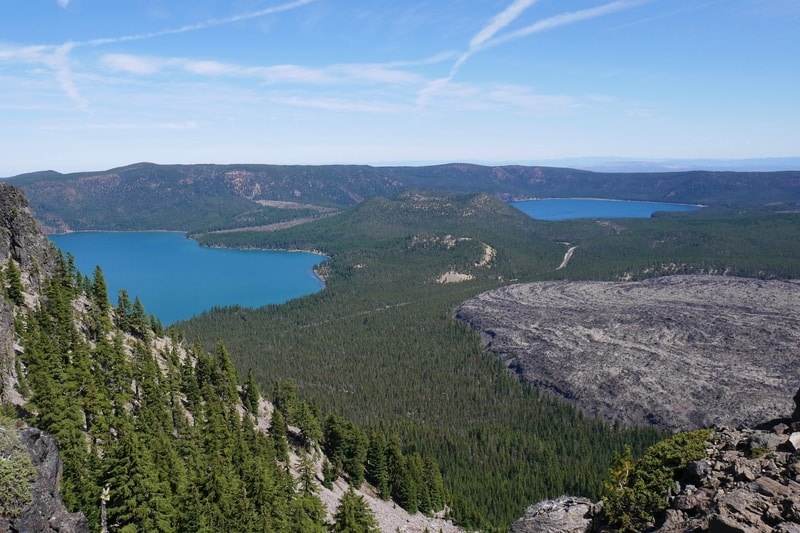
Exploring the Newberry Crater in Central Oregon
Visiting the lava lands of Central Oregon is just about as close as one can get to setting foot on the moon. At least that is what researchers believed in the late 1960s, when they sent NASA astronauts to the Newberry Crater Volcanic Monument in order to test out spacesuits and equipment.
Scientists believed the moon’s mysterious pockmarked terrain was a result of volcanic activity. So in order to prepare for what they might encounter in space, they performed extensive fieldwork at the Newberry Crater. Of all the lunar landscapes in the United States, they believed Central Oregon’s lava lands best mimicked what they might find on the moon.
And considering the area’s vast craggy swathes of hardened lava, I don’t find it difficult to understand why.
NEWBERRY NATIONAL VOLCANIC MONUMENT
The Newberry Crater Volcanic Monument lies within the boundaries of the Deschutes National Forest, just a stone’s throw away from the outdoor-sports mecca of Bend. The monument—home to some of the the most geologically fascinating landscapes in the Pacific Northwest—provides a unique opportunity to view the lava lands of central Oregon.
The Newberry Volcanic Monument includes over 50,000 acres of lakes, lava flows, and spectacular geologic features. Among its gems, are pyroclastic cones, vents, lava tubes, twin sapphire lakes, and an impressive obsidian flow that sparkles under the desert sun.
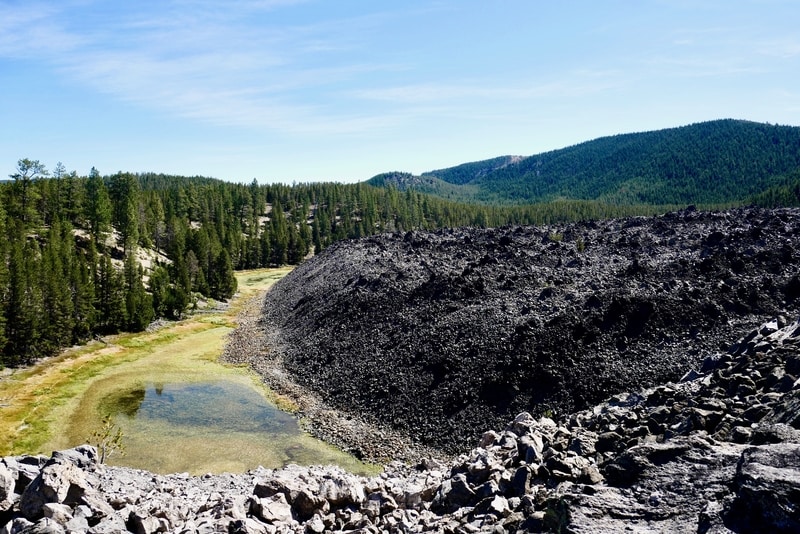
The sprawling Newberry National Volcanic Monument consists of four primary visitor destinations: Lava Butte, the Lava River Cave, the Lava Cast Forest, and the Newberry Caldera.
LAVA LANDS VISITOR CENTER AND LAVA BUTTE
The vast lava lands of Central Oregon formed about 7,000 years ago, after the volcanic explosion of Lava Butte. Lava Butte is a 500 foot tall cinder cone that lies off Highway 97, between Bend and Sunriver. The eruption of the butte left behind a miles-wide sea of jagged lava rock and created a unique lunar landscape with dozens of fascinating attractions.
Today, the Lava Lands Visitor Center is the interpretive hub of the Newberry National Volcanic Monument. Behind the center, two short signposted interpretive trails—the Trail of Molten Land and the Trail of Whispering Pines—allow visitors to get up close to the area’s unique lunar topography.
For aerial views of the lava flow, visitors can drive or hike up Lava Butte.
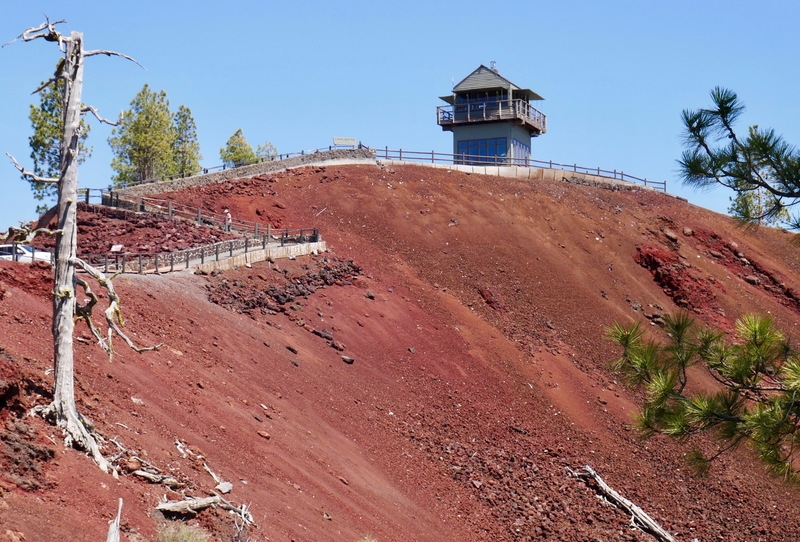
A fire lookout tower sits atop Lava Butte. From there, a short loop trail circles the rim of the cinder cone and offers panoramic views of the lava flow and Cascade Mountain Range beyond.
Along with the lava fields on the McKenzie-Santiam Highway, it provides some of Central Oregon’s most breathtaking lunar scenery.
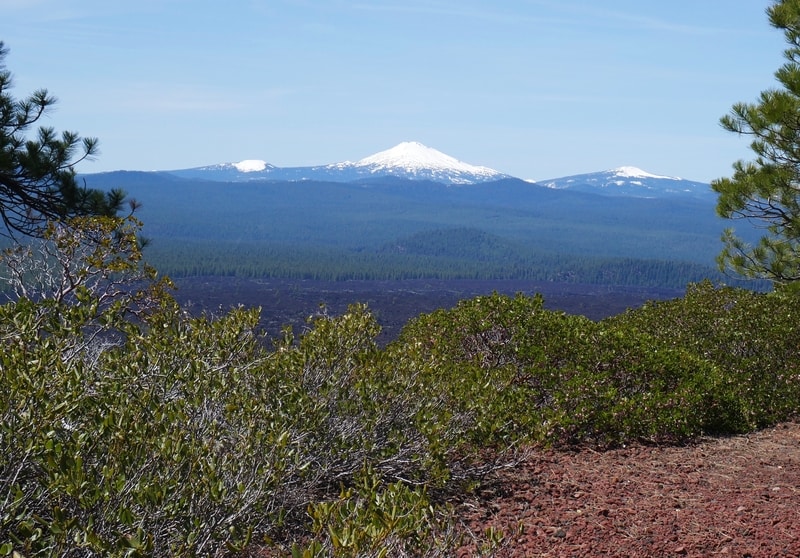
Lava Butte is easily accessible by private vehicle. Due to limited parking at its summit, however, the Lava Lands Visitor Center controls access to the attraction during peak times. Visits are limited to scheduled 30 minute time slots.
During our visit, we had to wait half an hour for access to the butte’s summit.
From the top of Lava Butte, stunning panoramas unfold in all directions. It is a perfect place to soak in the diversity of Central Oregon’s terrain—from its molten sea of hardened lava, to its abrupt transformation into ponderosa forest.
THE LAVA RIVER CAVE
While the Lava Lands Visitor Center and its surroundings are certainly worth touring for a comprehensive overview of the area, the Lava River Cave provides an opportunity to get close and personal with the the Newberry Crater’s geology.
As Oregon’s largest lava tube, the mile-long cave is a must-see.
Entrance to the Lava River Cave is free for those with an America the Beautiful pass or Northwest Forest pass. Otherwise, access to the cave is included in the $10 day use fee for the Newberry Crater. Hikers needing to rent torches (recommended unless you’ve brought your own light source), can pick up rental lanterns for $5 at a kiosk near the cave entrance.
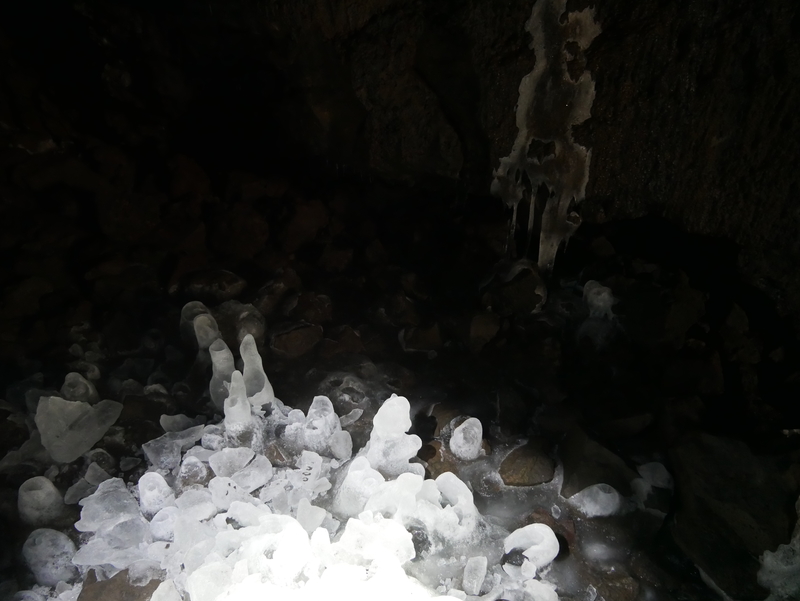
The interior of the Lava River Cave is dark and cold, so—in addition to torches—close toed shoes and sweaters are recommended.
The cave’s entrance appears as a large hole in the ground. At its mouth, the trail drops suddenly over a jumble of volcanic rocks. To get past the rock pile to the cave’s sandy floor, visitor must descend 126 steps. This treacherous area is called the Collapsed Corridor.
The Lava River Tube extends for a mile below the surface of the earth. Along its entire length, it passes through chambers that reveal the various stages of the cave’s formation. The entire experience is eerie and silent and potentially claustrophobia-inducing. When I turned off my torch in the middle of the cave, I felt as though I were standing in a sensory deprivation chamber.
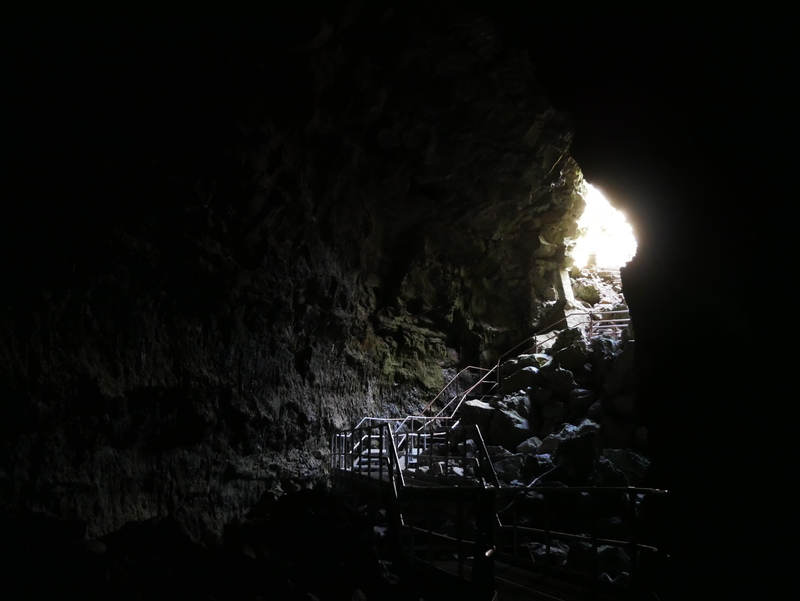
While hiking the Lava River Cave won’t provide the types of stunning panoramas that are so prevalent in Central Oregon, it is nonetheless one of the most interesting places to visit in the area.
It is an otherworldly experience. A testament to the geological diversity of the region.
THE NEWBERRY CALDERA
Though I’d traveled to Central Oregon on numerous occasions throughout my childhood, I didn’t make it to the Newberry Caldera until recently. Looking back, I have no idea why.
The caldera is the jewel of Oregon’s Newberry Crater National Monument. It is a geology-lover’s dream and a recreation-enthusiast’s playground. Within its confines, lie two sapphire lakes, numerous forested hiking trails, and a large obsidian flow.
The highest point within the caldera is the summit of Paulina Peak, which showcases views of the Cascades, the twin lakes, and the vast and sweeping Oregon Outback.
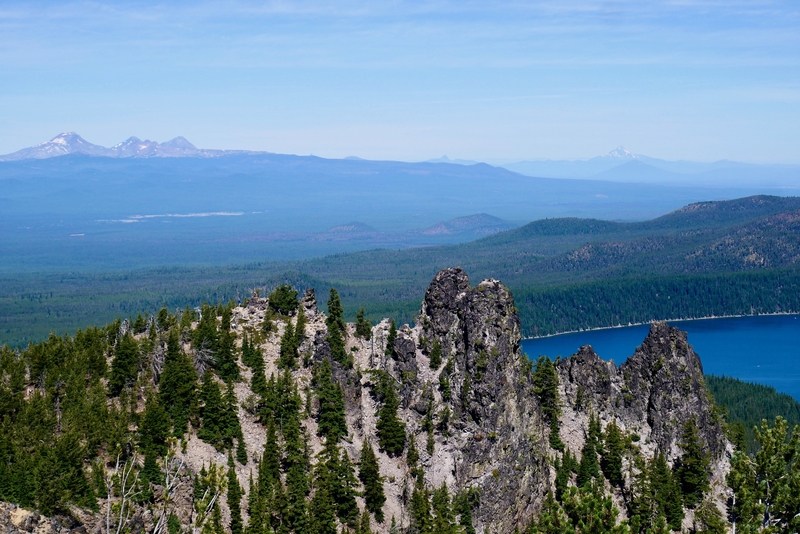
The park’s deceptively high altitude means that the road to the top of Paulina Peak is closed for much of the year.
But come summer, the Newberry Caldera offers a plethora of activities that range from hiking to boating, from camping to swimming, and from fishing to soaking in hot springs.
-
PAULINA AND EAST LAKES
Paulina Lake and East Lake are twin lakes that lie within the confines of the Newberry Crater. From the top of Paulina Peak, views of the two sparkling sapphire lakes are exceptional.
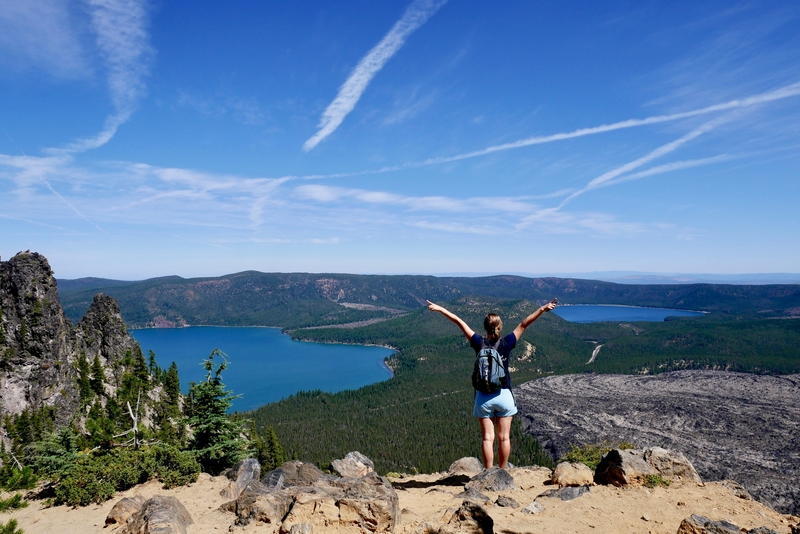
The twin lakes offer recreational activities galore. Paulina Lake, the larger twin, feeds into a creek and waterfall. Thermal vents along the lake’s shores help create a unique ecosystem.
I hear that there are even secret hot springs at the lake’s edge!
-
THE BIG OBSIDIAN FLOW
One of the Newberry Crater’s newest and most impressive features, is the Big Obsidian Flow. The Big Obsidian Flow is one of Oregon’s best volcanic attractions—both for the sheer awe it produces, and for its geological significance.
The prospect of hiking amongst a sea of glassy obsidian is actually what drew Dan and I to the area in the first place. An easy one-mile interpretive trail offers the perfect introduction to the area’s unique geology.
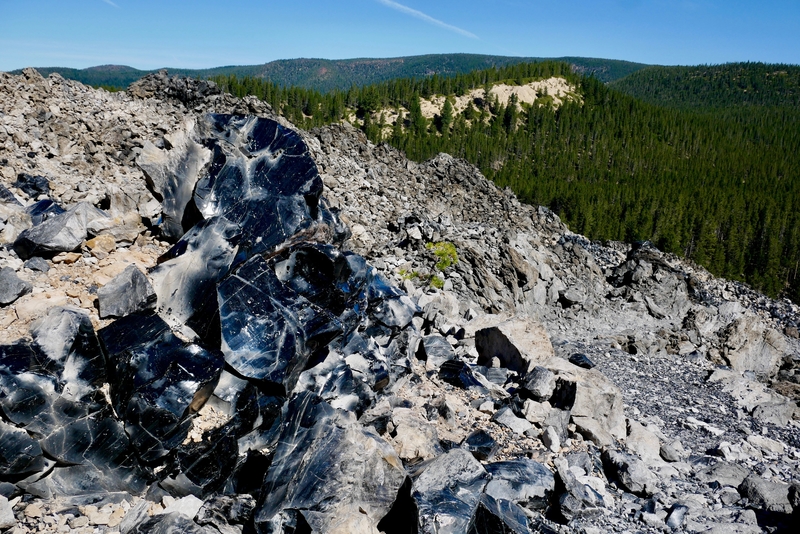
Dating only 1,300 years, the obsidian flow was the final stage of a bigger eruption. The sprawling blanket of glass formed as magma made its way to the Earth’s surface and cooled.
In contrast to the basaltic lava found throughout the Pacific Northwest, obsidian lava contains much higher concentrations of silica, the primary ingredient in glass.
As a result, on sunny days, the Big Obsidian Flow twinkles like a bedazzled carpet.
-
PAULINA FALLS
Paulina Falls is one of the monument’s top year-round attractions. In summer, its 80 ft twin cascades are accessible via a paved half-mile walkway.
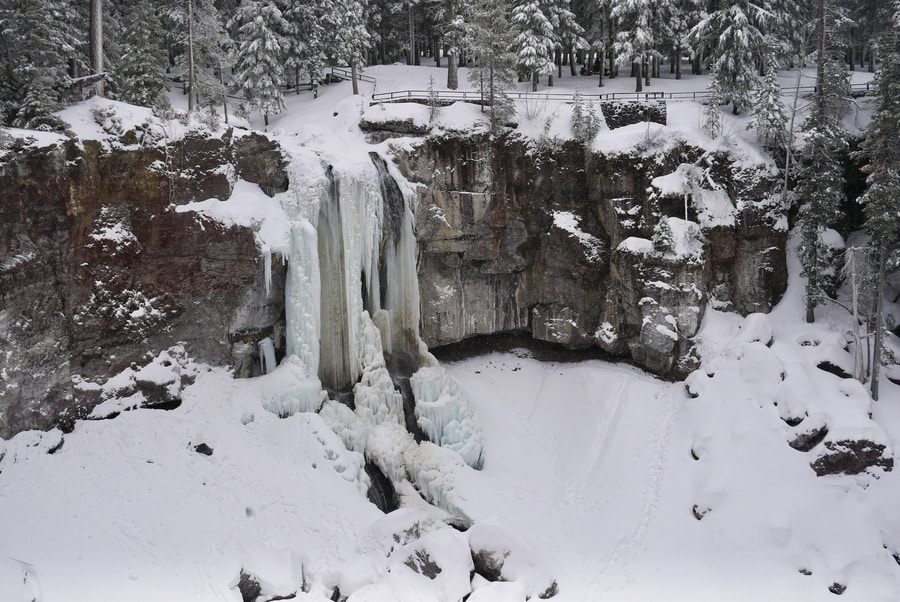
Though much of the Newberry Crater becomes off-limits in the winter, the area’s lower elevations contain two sno-parks with groomed snowmobile trails and snowshoe routes.
Snowshoeing to Paulina Falls is a popular winter excursion that showcases the area’s wintry wonderland. The Paulina Creek Falls snowshoe route begins at the Tenmile Sno-Park and winds through verdant forest for 5.4 miles.
THE LAVA CAST FOREST
The Lava Cast forest is the least visited section of the Newberry Volcanic Monument.
And in all honesty, I have yet to see it in person.
The Lava Cast Forest is a 6,000 year old lava flow that contains molds of ancient trees. When hot lava came into contact with trees, it chilled around their trunks and created a protective casing. The trees then burned out of their molds, leaving hollow interiors.
***
The lava lands in Central Oregon are reminiscent to the fields of molten rock found in Iceland or on Hawaii’s big island. They are a testament to the diverse and ever-changing geology of the Cascades, and a unique terrain to explore within an hour of Bend.
The Newberry Crater is an otherworldly place to visit. It is just about as close as one can get to stepping foot on the surface of the moon.
Until space travel becomes mainstream, that is.
______________________________
Like this Guide to the Newberry Crater and Oregon Lava Lands? Pin It!
